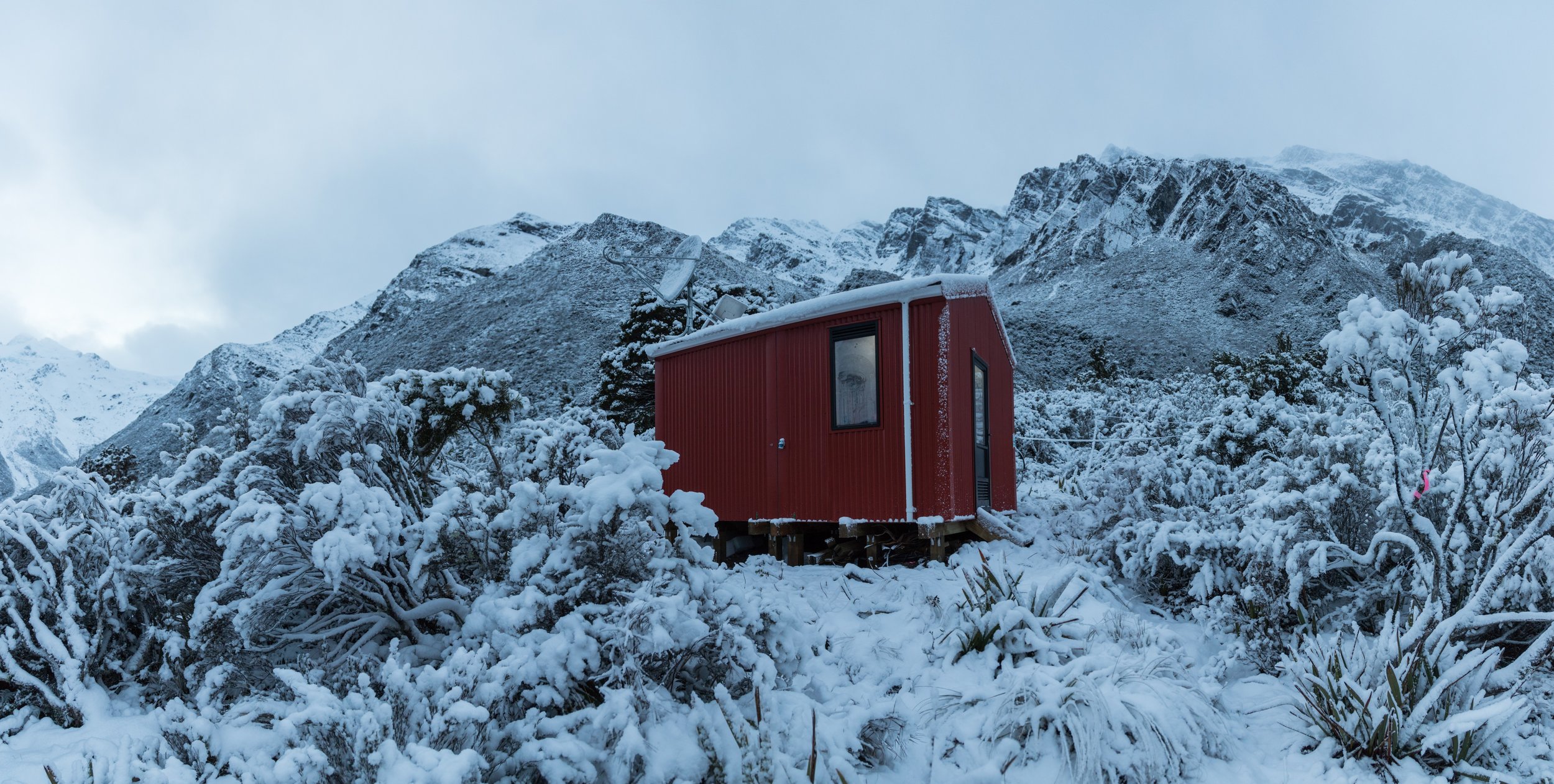Zero Invasive Predators Ltd (ZIP) will undertake the aerial 1080 predator removal phase of the research and development programme in the Perth River valley from early 2019.
This phase was originally scheduled to be completed during winter 2018, but the forecast weather and snow conditions in the valley are such that we now cannot be confident that the 1080 to Zero method can be fully implemented in a timely fashion, in order to completely remove introduced predators. After consulting with our colleagues from the Department of Conservation it was decided to carry out the aerial phase from early 2019, in order to increase the likelihood of its success.
The weather factor
As detailed in a previous Update, the baiting schedule that is the basis of the 1080 to Zero method is weather dependent. In general, the ideal weather window each time we apply bait comprises one fine, calm day, followed by at least two nights of fine weather. The weather over the past three months has presented very few suitable weather windows. Despite that, we have successfully applied non-toxic prefeed bait on two occasions (on 30-31 May and 21 June).
Weather experts have advised that there is a 70-80% chance of an El Nino weather pattern emerging this spring, which will bring a predominantly south-west airflow, with cooler and wetter than normal conditions predicted for the West Coast. If this pattern does eventuate, then it is unlikely that we will be able to complete the four remaining applications of bait.
Perth River in flood, near Scone Hut (Credit: Briar Cook)
The snow factor
Ideally, toxic bait is not applied on snow that has settled on the ground. Snow can prevent target predators from accessing bait, and the moisture in the snow begins to degrade the bait, making it less effective.
Considerable snow has fallen within the project area. It is now estimated that the ‘permanent’ snow line, i.e. the lowest elevation of snow not expected to recede until spring, is at approximately 1,250 metres above sea level.
Intermittent snow storms are likely to continue to bring snow to lower levels, where it will melt away. The image below shows snow conditions around one of the temporary bivvies located at approximately 800 metres above sea level.
Snow at 800m above sea level, 23 July 2018 (Credit: Chad Cottle)
Comments
The programme of work we are undertaking in the Perth River valley is research and development. We are focused solely on developing and refining a new way of tackling the predator management challenge, in an attempt to halt, and ultimately reverse, the decline of our native species. We are making good progress, but there is still much to do and learn along the way.
It is important to acknowledge that the fundamental nature of research and development is that there is inherent uncertainty, and risk. In this case, we are no longer confident that proceeding with the 1080 to Zero operation under current and forecast snow and weather conditions will deliver the predator-free results sought.
Between now and early 2019, we will continue to test and refine techniques to reduce potential impacts on kea (in association with Department of Conservation scientists), and increase our confidence in successfully delivering the Remove and Protect model in the Perth River valley.



